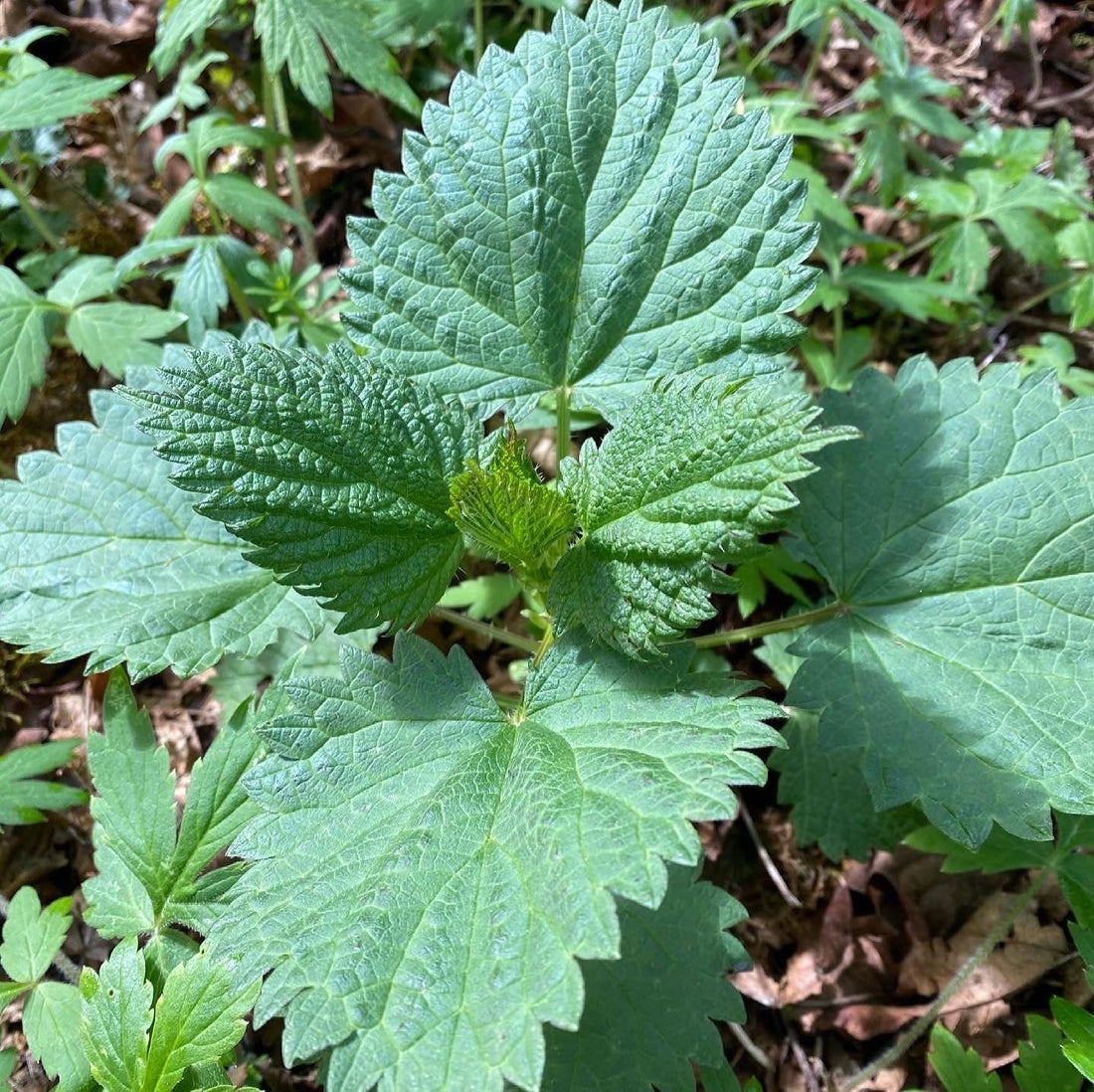
Embracing the Viriditas: The Green Power of Wild Spring Greens
Embracing the Viriditas: The Green Power of Wild Spring Greens 
As winter softens and spring begins to stir across the Northern Hemisphere, the land offers its first gifts: tender wild greens ready to be foraged. From the mineral-rich sting of nettles to the lemony crunch of purslane, these plants not only enliven the palate but also brim with nourishment. Early spring is the season of renewal—let’s step into the green world and meet some of these vibrant allies.
Stinging Nettles (Urtica dioica)
Nettle is one of the finest nutritive tonics we have, overflowing with iron, protein, chlorophyll, and vitamins A, C, and K—along with calcium, potassium, silica, and fiber. Consumed regularly, nettles build vitality, strengthen kidneys and adrenals, and even support seasonal allergy relief when taken in advance.
Harvesting fresh nettles is a joyful rite of spring—just remember your gloves! For the brave, pinch a fresh bud and taste it raw; a fleeting sting, then a burst of green energy, a true initiation into the wild food world. Steam them, turn them into pesto, or dry for nourishing infusions to sip year-round.
Purslane (Portulaca oleracea)
This humble succulent sprawls low across the ground, its crisp leaves carrying a lemony spark. Purslane is one of the rare plant sources of omega-3 fatty acids, and also offers vitamins A, C, and E, plus magnesium, iron, and calcium. Remarkably, it contains glutathione—known for supporting cell repair—and even melatonin, to help regulate sleep cycles. Try adding it to your evening meal for a refreshing crunch that also supports rest.
Chickweed (Stellaria media)
Bright, tender, and cooling, chickweed is one of the most approachable spring greens. Rich in B and C vitamins, calcium, and potassium, it is loved both as a skin-soothing herb and as a gentle metabolic tonic. Unlike many wild greens, chickweed is mild rather than bitter—perfect tossed fresh into salads, blended into pesto, or lightly sautéed.
Miner’s Lettuce (Claytonia perfoliata)
Once gathered by miners to ward off scurvy, this delicate plant remains a true spring treasure. Its crisp, mild leaves are high in vitamins A and C, iron, and magnesium. Snack on it fresh during a hike, or add to salads for a satisfying crunch. Even in flower, miner’s lettuce stays tender—a generous gift of the season.
Cleavers (Galium aparine)
With its sticky stems and whorled leaves, cleavers may not look like food, but it is a revered spring cleanser. Known for supporting healthy lymphatic flow, cleavers are rich in antioxidants and minerals. Try juicing fresh plants for a daily tonic, or add them to soups and teas for gentle spring rejuvenation.
Ramps / Wild Onions (Allium tricoccum)
Beloved for their bold garlicky flavor, ramps are rich in vitamins A and C, iron, and manganese. They add depth to omelets, pastas, and sautés. Because they are slow to mature—taking up to five years to reproduce—harvest with care and restraint to protect wild populations.
Curly Dock / Yellow Dock (Rumex crispus)
Recognizable by its curled leaves and reddish stems, curly dock is tart and mineral-rich. Containing vitamins A, C, and iron, it supports digestion and healthy blood. Its tang comes from oxalic acid, the same found in spinach and rhubarb—enjoy it seasonally, but don’t overdo it. Perfect for soups, sautés, or adding a sour kick to spring meals.
Dandelion (Taraxacum officinale)
This iconic wild green offers a deep well of nourishment—vitamins A, C, K, calcium, and potassium. The bitter greens support digestion and kidney health, while flowers brighten salads, teas, or vinegars. Even the roots can be roasted for a coffee-like drink. Few plants embody resilience and generosity like the dandelion.
Watercress (Nasturtium officinale)
Thriving in cool streams, watercress delivers a peppery bite and abundant nutrition. It belongs to the brassica family alongside kale and broccoli, and is loaded with antioxidants, vitamins, and minerals. Toss into salads, blend into soups, or simply snack fresh. Traditionally, watercress was even used as a spring tonic for hangovers.
Plantain (Plantago spp.)
Known worldwide as a healing herb, plantain is high in vitamins A, C, and K, flavonoids, and minerals. Fresh leaves, when chewed and applied, ease insect bites, stings, or splinters. Internally, plantain is cooling and soothing. Eat young leaves raw or brew them into a gentle tea.
Foraging with Care
Before gathering, learn to identify plants clearly—take a field guide or join a foraging class. Ask permission when on private land, avoid polluted areas, and harvest ethically to ensure wild stands thrive for future generations. Always approach with gratitude: these plants are living gifts, and reciprocity honors that relationship.
Celebrating the Seasonal Harvest
Wild harvesting reconnects us with the turning of the seasons. Each bite of green brings not just minerals and vitamins, but also the medicine of presence: fresh air in your lungs, earth under your feet, the hush of your mind quieting as you gather.
So grab a basket, step outside, and meet the wild spring greens that surround you. They carry both nourishment and wisdom—an invitation to ground, to savor, and to celebrate the green power of life returning.
Happy foraging! 🌿